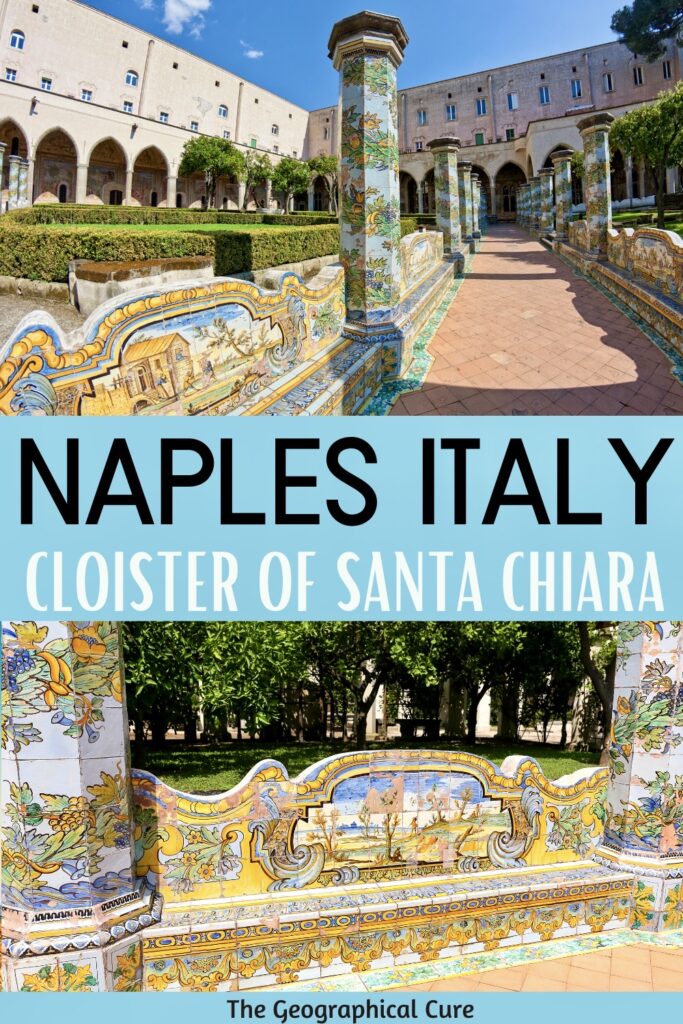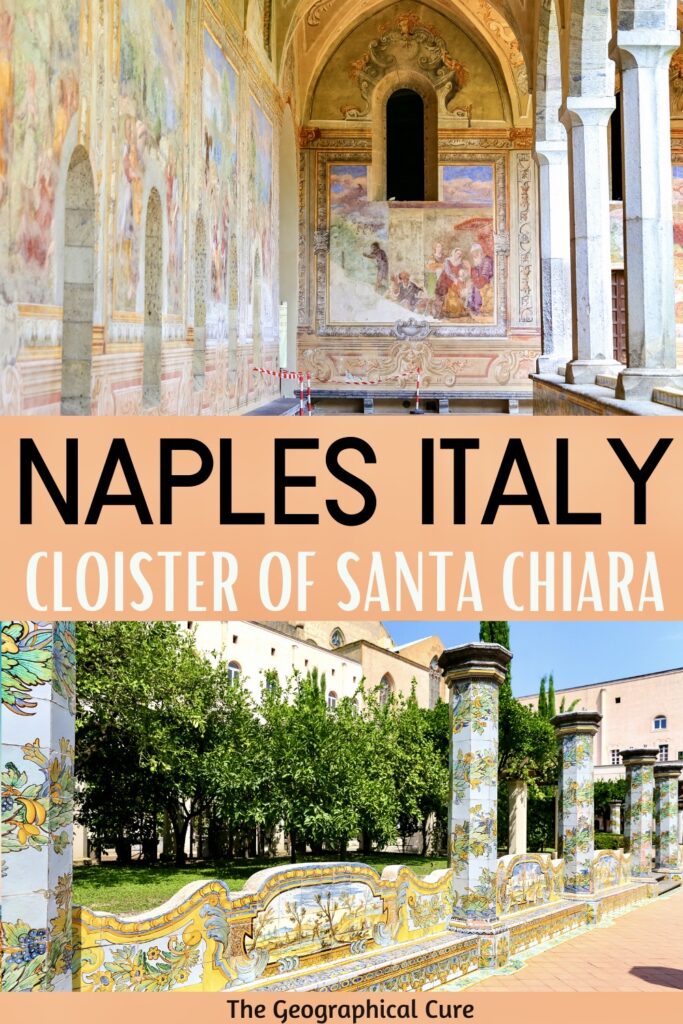If you are one the hunt for beauty in Naples Italy, I recommend visiting the Cloister of Santa Chiara, the Chiostro di Santa Chiara. It’s a serene oasis where you can escape the hustle and bustle of the city.
The cloister is filled with covered arcades and gardens. It’s adorned with lovely frescos and vibrant majolica tiles. That all makes it one of the most photographed must see spots in Naples.
The Majolica Cloister in the center is the main attraction and simply captivating. It’s an extravaganza of beautiful blue and yellow majolica tiled panels with engaging floral and country motifs.
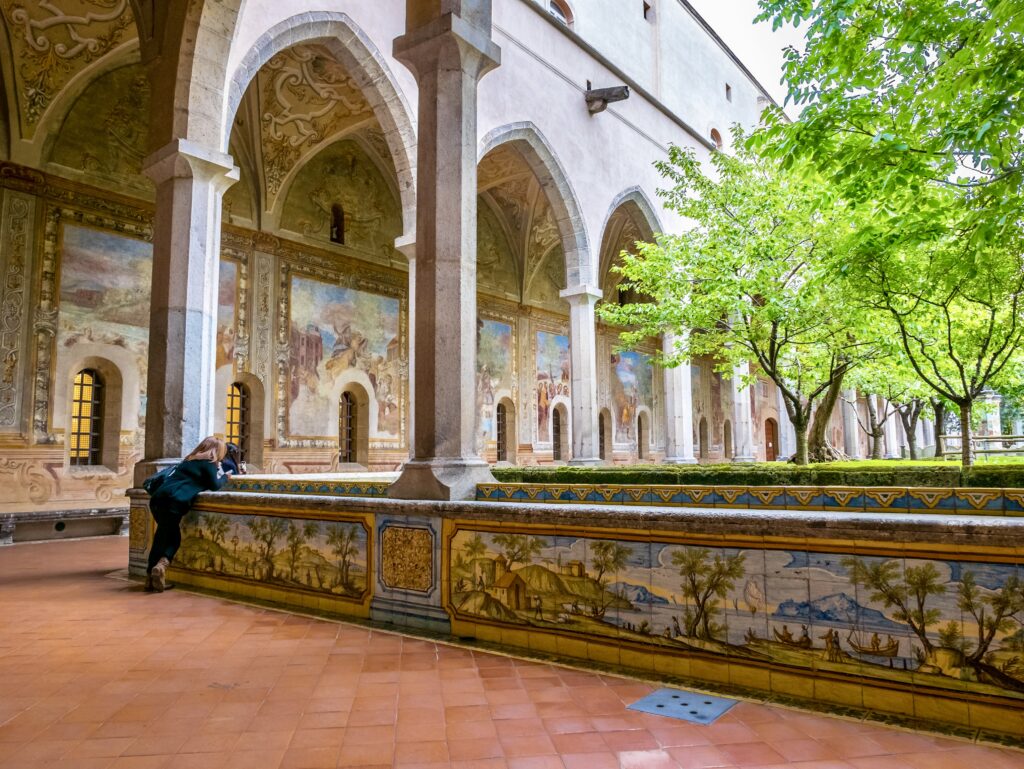
A Short History of the Cloister of Santa Chiara
The Cloister of Santa Chiara dates back to the 14th century. It was commissioned by King Robert of Anjou and his wife, Queen Sancha of Majorca. It was part of the construction of the adjacent Santa Chiara Church and monastery for the Franciscan order.
The construction of the cloister began in 1310 and was completed in the early 1340s. It was originally designed in the Gothic style. The cloister served as a central gathering space for the nuns of the Order of Poor Clares.
Over the centuries, the cloister underwent several renovations. In 1742, Antonio Vaccario transformed the original medieval architecture with the addition of beautiful majolica tiles.
What To See At The Cloister Of Santa Chiara
Here are the things you can expect to see on a visit to the Cloister of Santa Chiara.
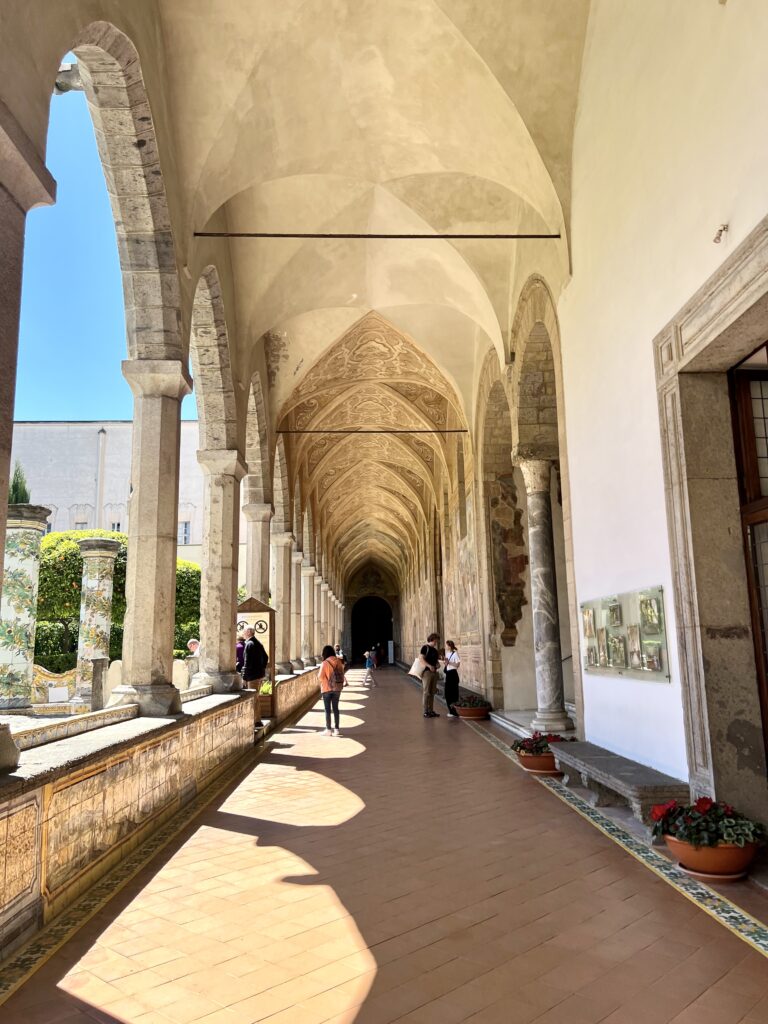
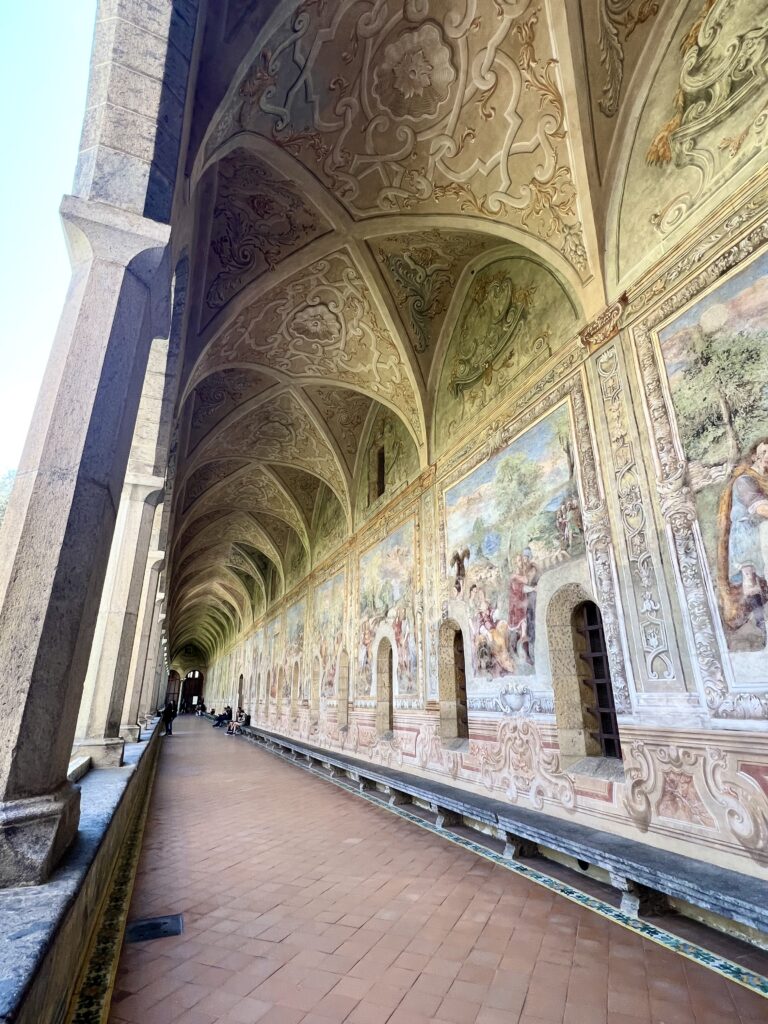
Architecture
The cloister features a unique blend of Gothic, Renaissance, and Baroque architectural styles. It was built in the 14th century and underwent several renovations and additions over the years.
The cloister consists of an open courtyard surrounded by elegant columns. The columns are made of white marble. They are simple unadorned, in keeping with the harmony of a cloister.
The pointy arches between the columns create a harmonious arcade, providing a serene and peaceful atmosphere within the cloister.
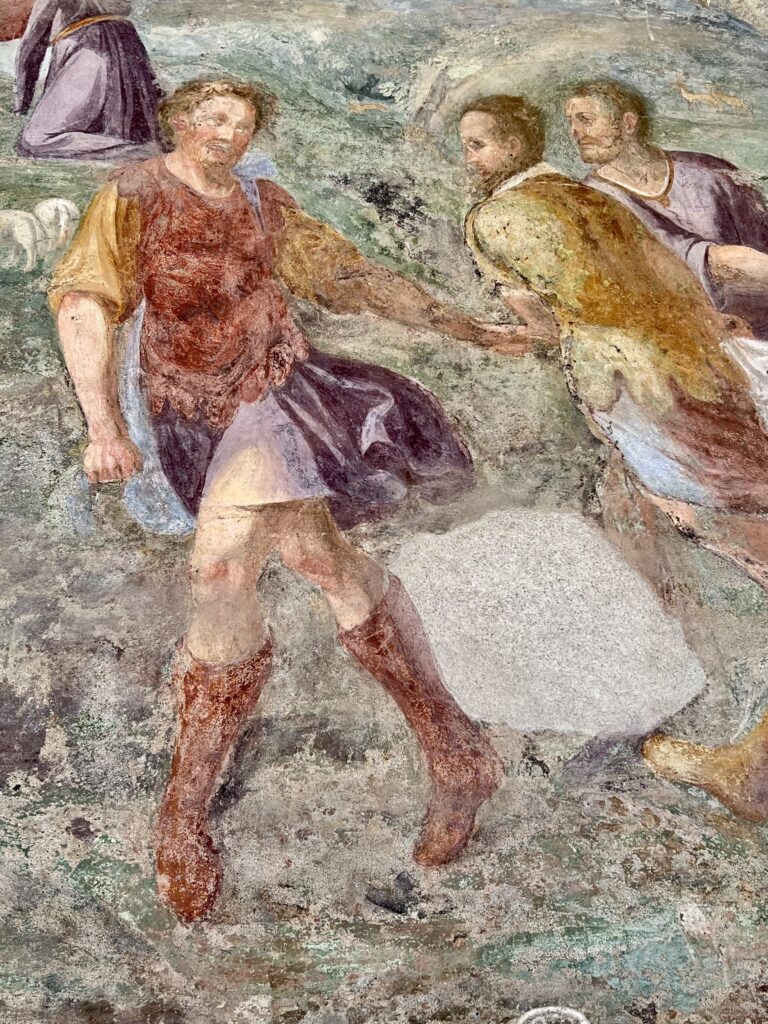
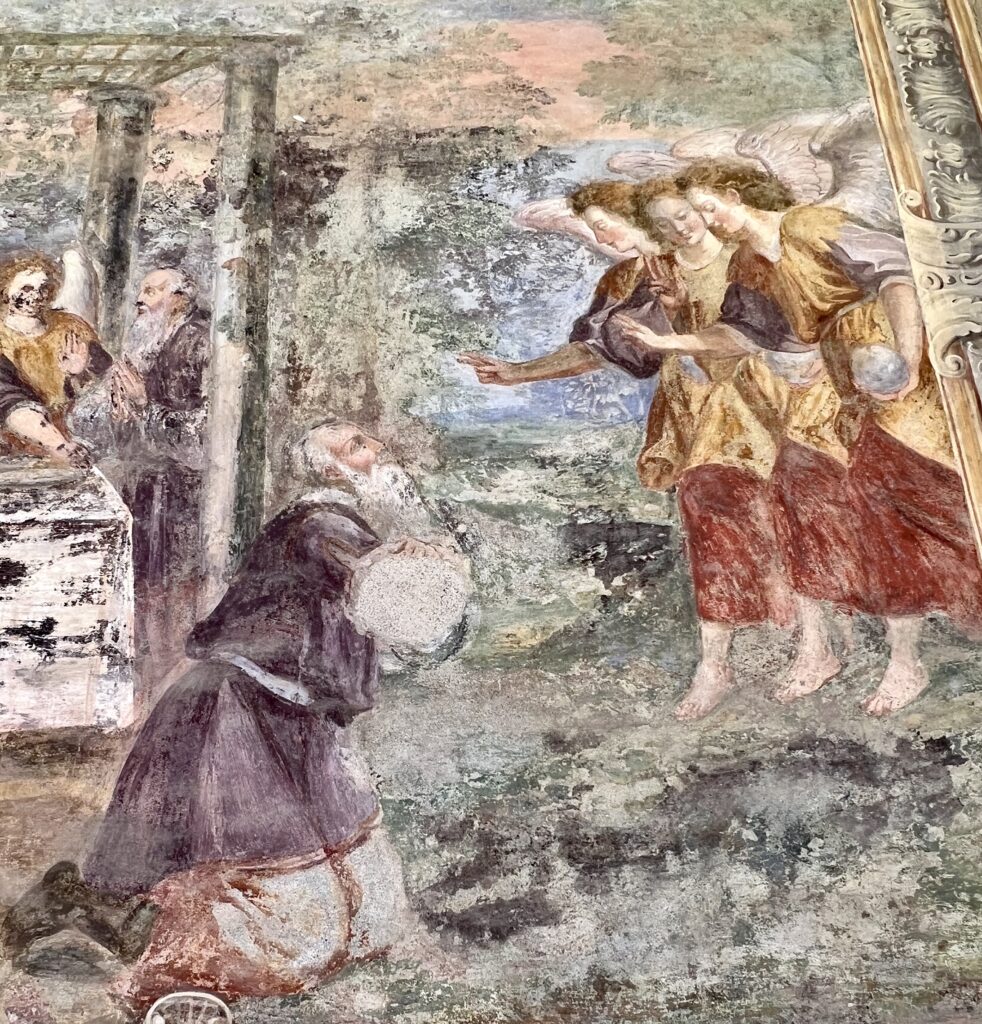
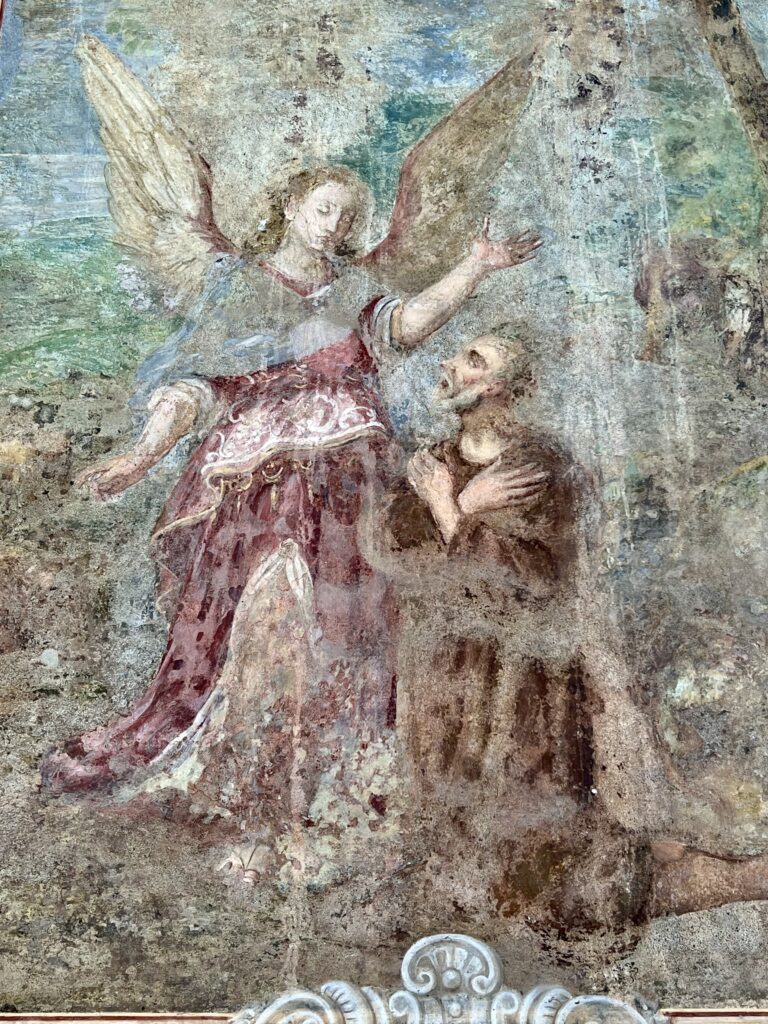
Frescos
The Cloister of Santa Chiara is decorated with a series of beautiful medieval frescos.
They depict various Franciscan stories from the life of Saint Francis and Saint Clare of Assisi. Clare was a follower of St. Francis and the founder of the Order of Poor Ladies, also known as the Poor Clares.
The frescoes were created in the 14th century by a group of anonymous artists from the Neapolitan school. They are characterized by their vibrant colors and delicate details, showcasing the artistic style of the time.
The frescos are quite lovely, with vibrant yet delicate hues. They contribute to the peaceful atmosphere of the cloister. Over the years, they have been restored.
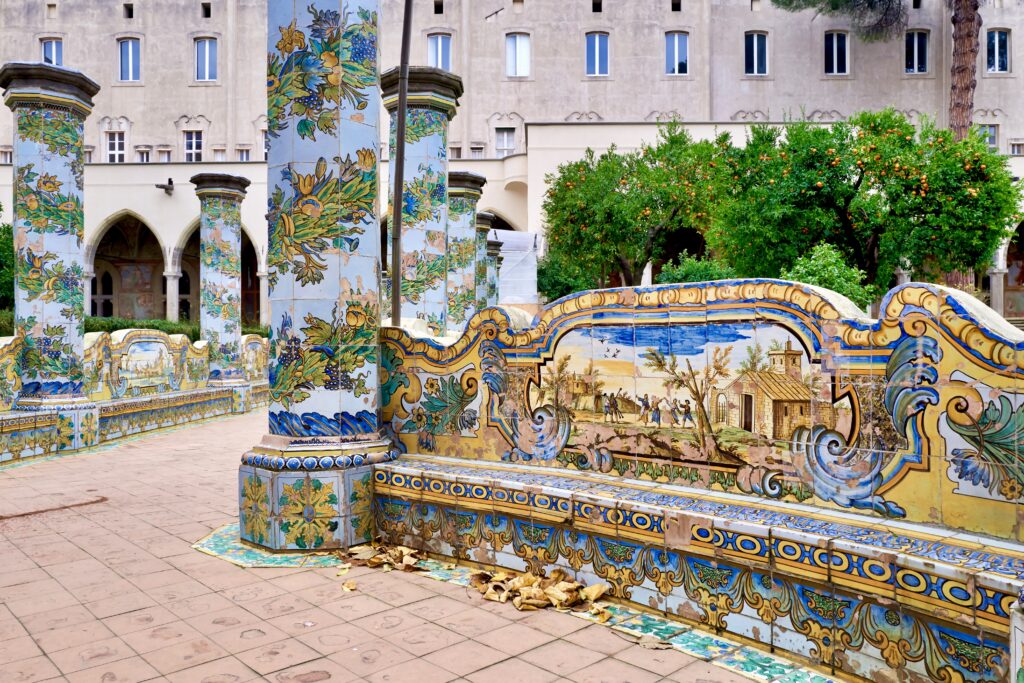
Majolica Cloister
The highlight of a visit to Santa Chiara is the Majolica Cloister, also known as the Chiostro delle Maioliche.
It’s famous for its exquisite majolica decorations that are simply visually stunning to behold. They were hand painted between 1742 and 1749 by a group of local artists from Naples, including Donato and Giuseppe Massa.
“Majolica” refers to a type of ceramic tile characterized by a colorful and decorative glaze. The cloister tiles are festooned with floral motifs and depict pastoral country scenes. The secular themes were intended to allow the nuns who lived in seclusion to see what life was like outside the cloister.
The scenes often feature decorative borders and motifs that enhance the overall aesthetic appeal.
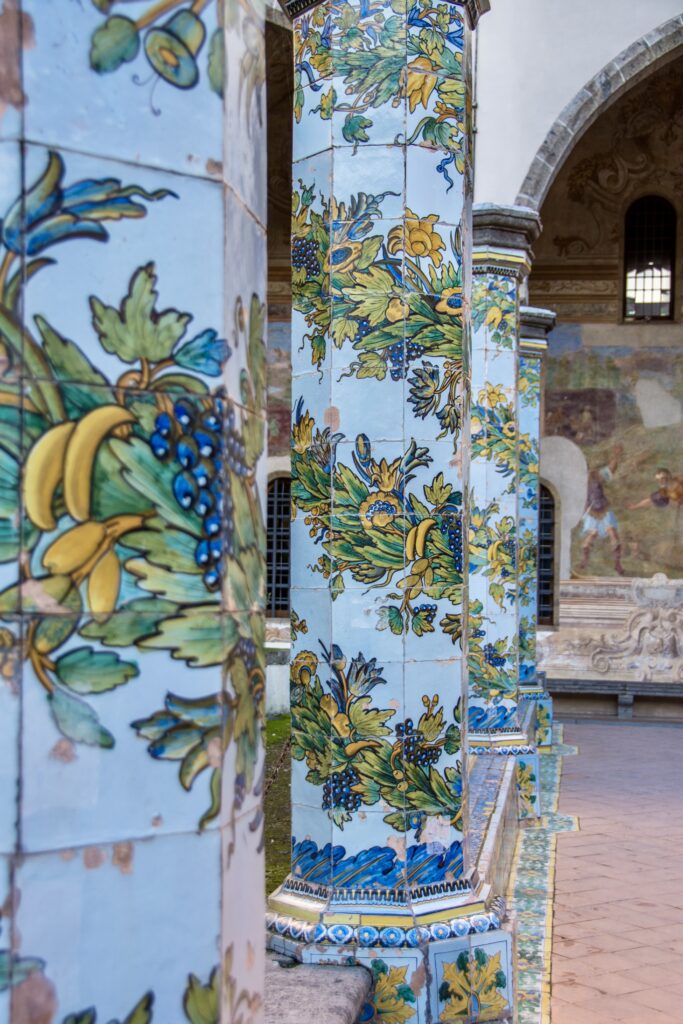
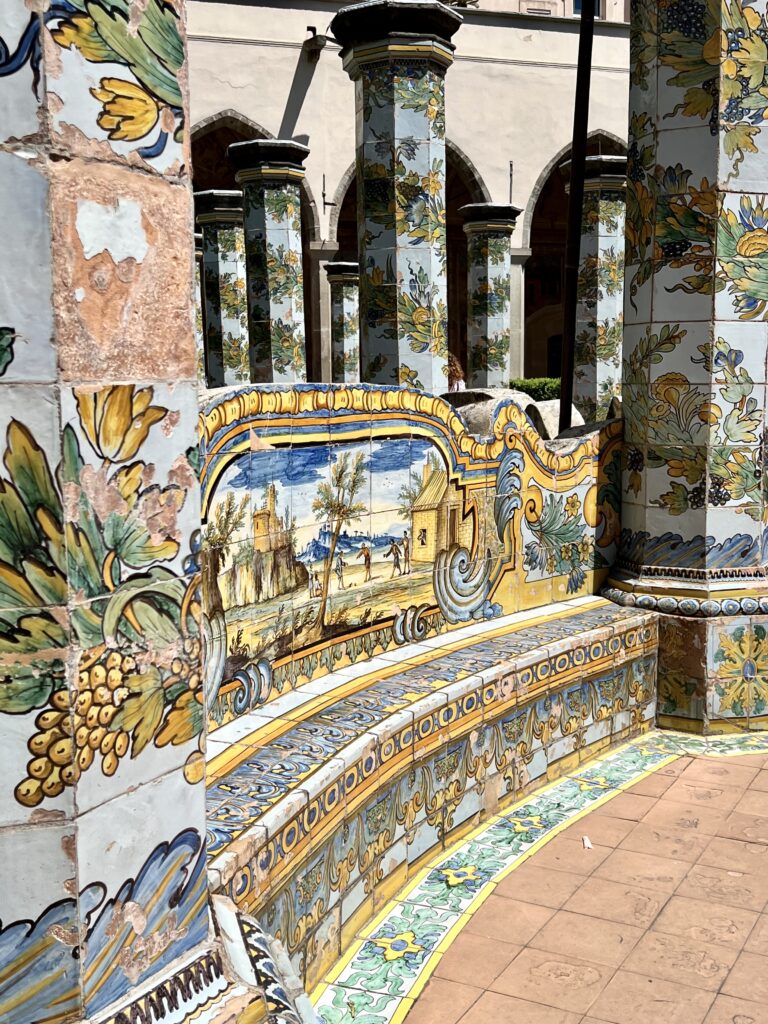
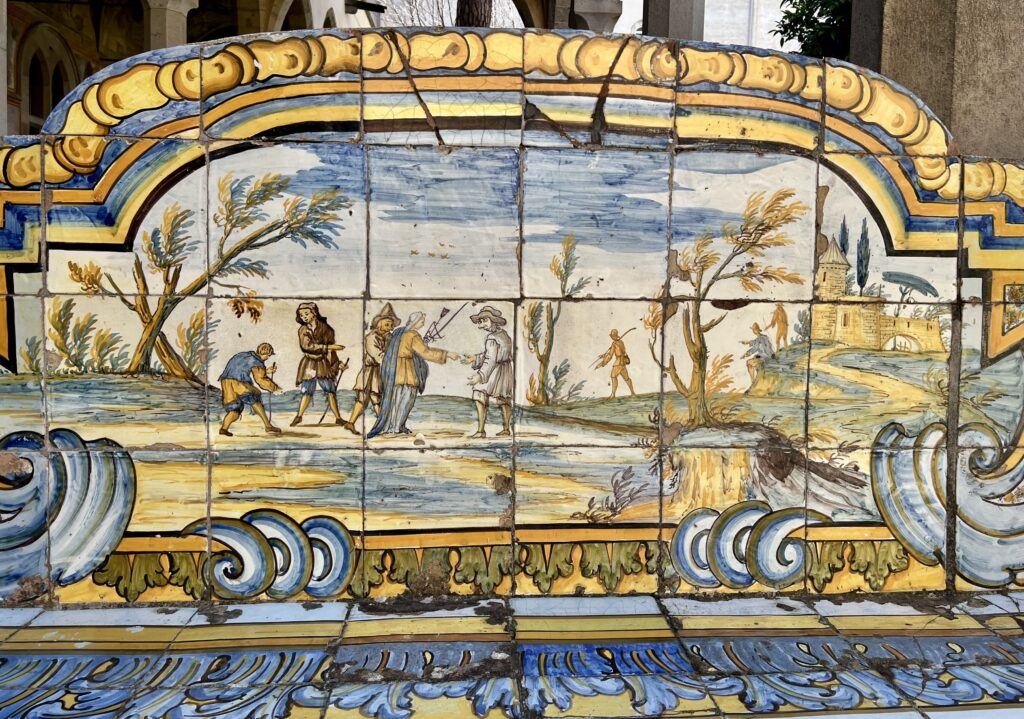
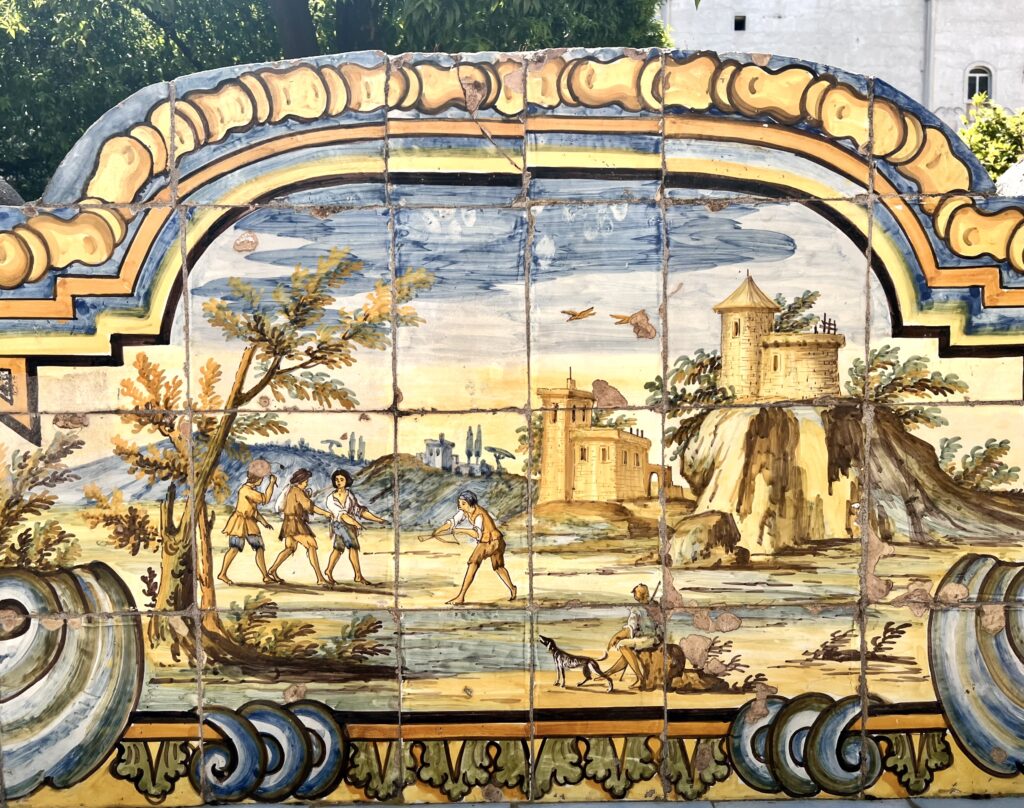
The central courtyard also has a series of 72 columns. They create a sense of rhythm and order in the space and are connected by the benches.
The columns are made of stone and feature ornate spiraling designs, adding to the artistic and architectural appeal of the cloister. The cloister is also filled with flowering shrubs, trees, and wildflowers.
Best part? There are benches where you can plop down and soak in the beauty of the serene space.
Not the ones with majolica tiles, of course. But there are other seats.
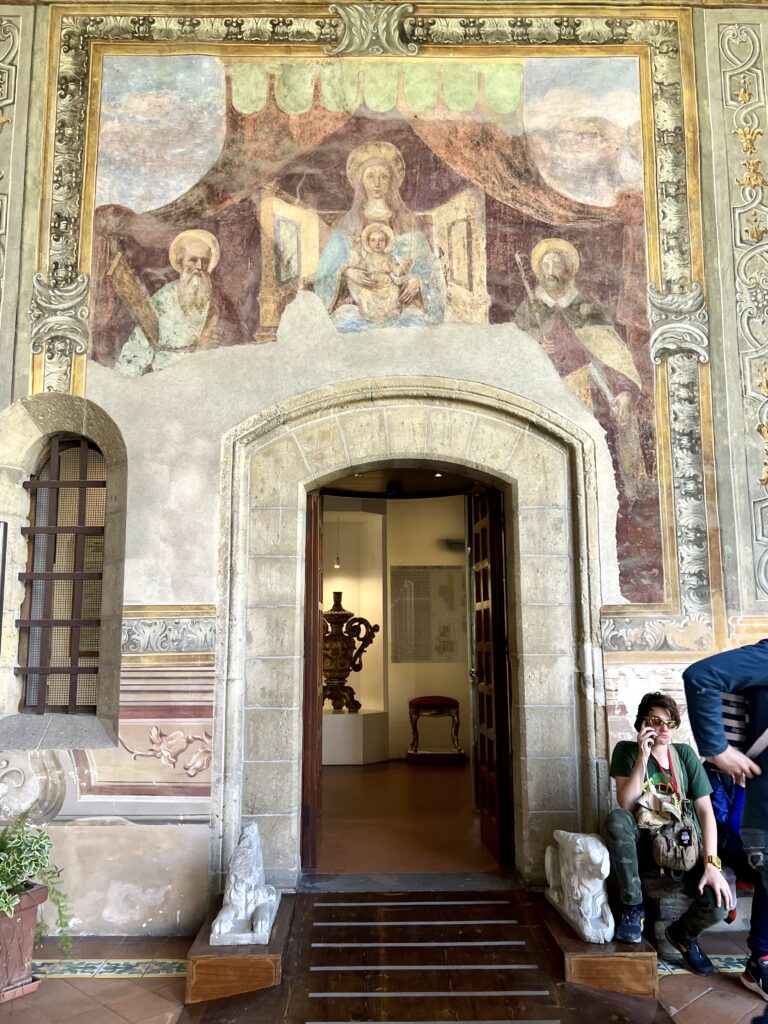
Museo dell’Opera di Santa Chiara
There’s also a small onsite archaeological museum. It houses a collection of artwork and artifacts related to the history, art, and culture of the Santa Chiara complex from 300 to 700.
The pieces on display include religious sculptures, reliquaries, bas reliefs, paintings, and decorative objects from different periods. There’s even the ruins of ancient Roman baths and a royal crib!
As you explore the museum, you can also learn about the the lifestyle of the Poor Clares and the religious practices associated with the complex.
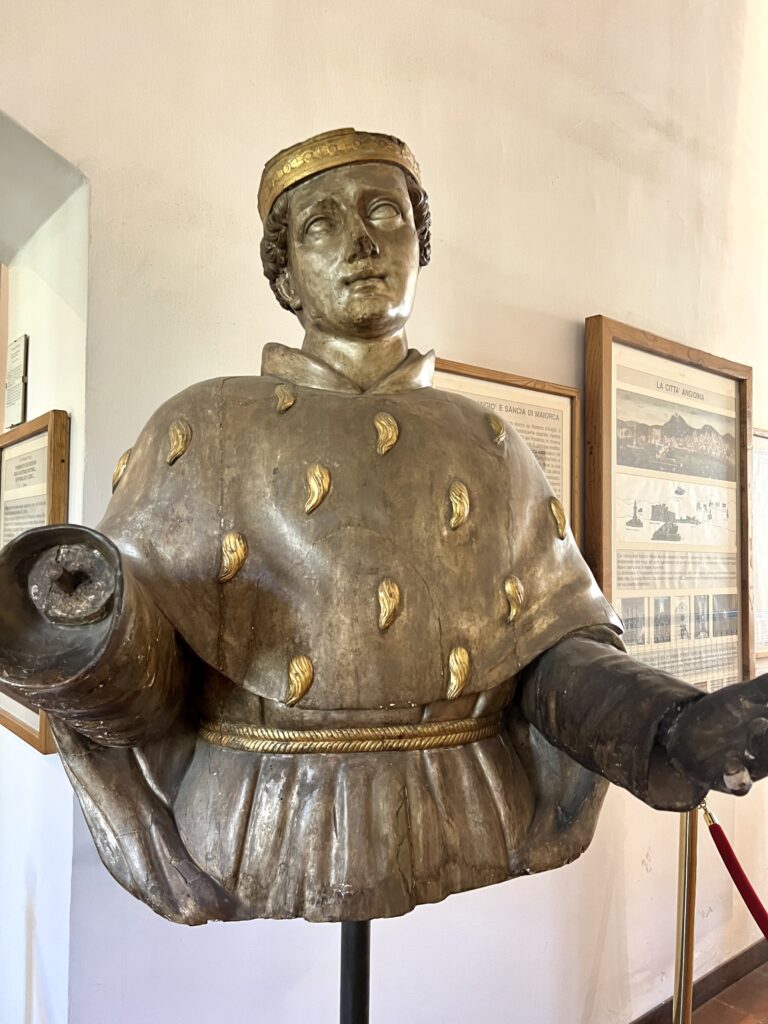
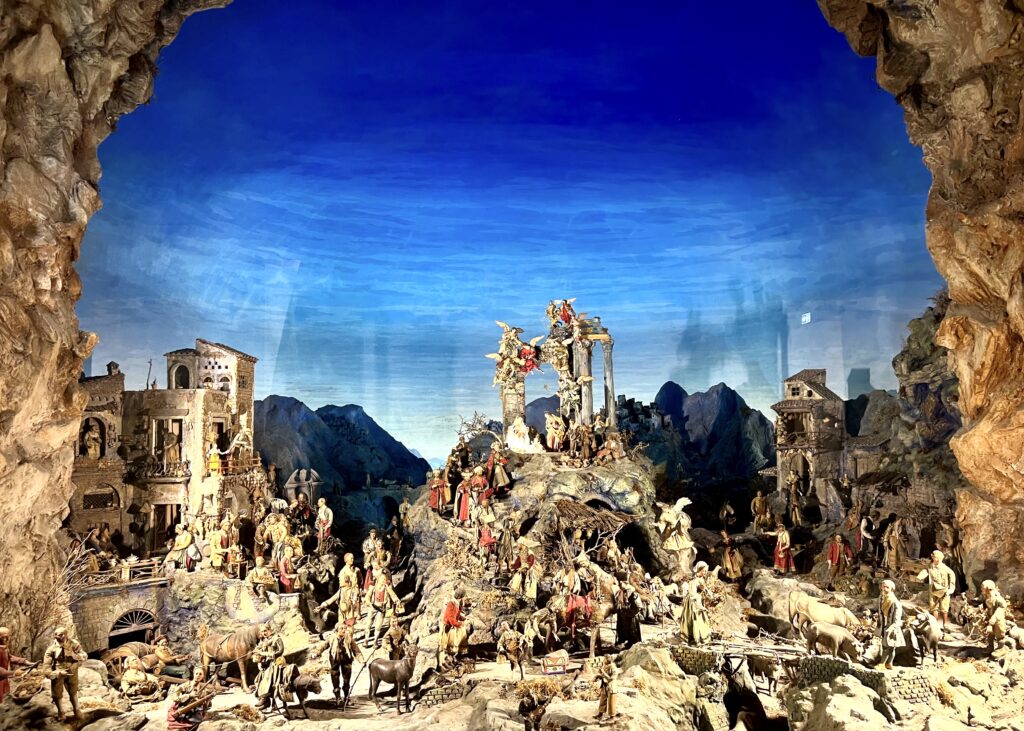
Nativity Scene
You also can’t miss the stunning 18th century Nativity Scene near the exit. It was created during the reign of Ferdinand VI of Bourbon. It’s made of cork, wood, paper macho, wire, and terra cotta.
Neapolitan nativity scenes are very distinctive. They’re known for their vibrant colors, elaborate costumes, and realistic portrayal of everyday life in the region.
This scene includes not only the holy family but also a multitude of characters from Neapolitan society, such as artisans, street vendors, and musicians. In essence, it not only describes the holy event, but captures 18th century Naples as a main character.
There’s even a dilapidated Roman temple in the nativity. This is meant to symbolize the birth of a new Christian Era on the ruins of paganism. It also alludes to the great archaeological discoveries in Pompeii.
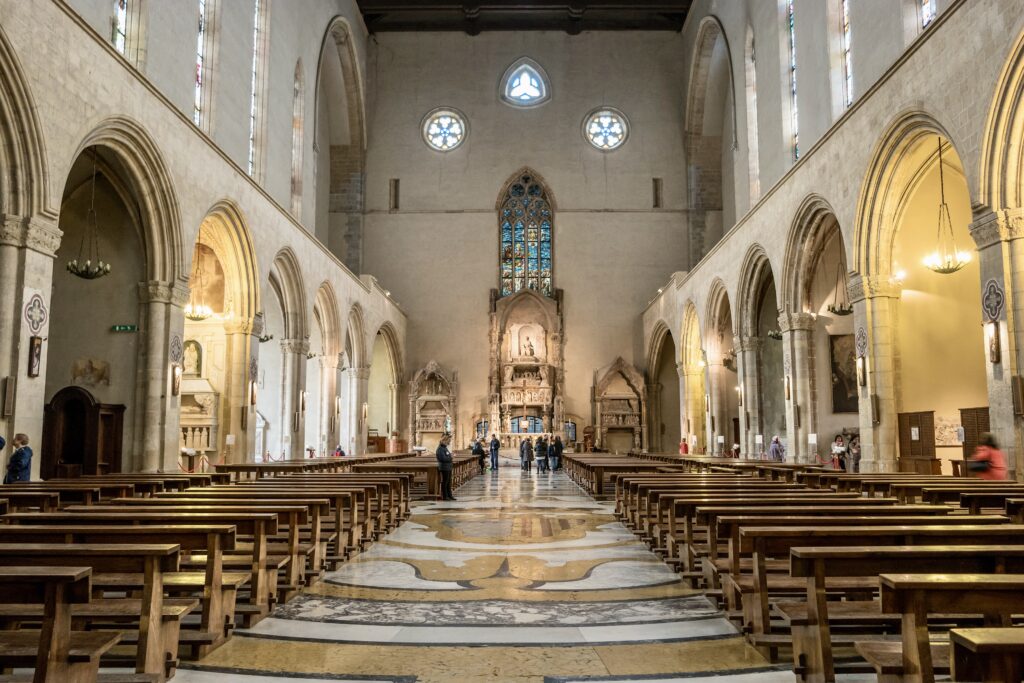
Church of Santa Chiara
The cloister is attached to the Church of Santa Chiara, which is free to enter.
It’s a Gothic-style church that’s worth a short peak inside. Though you may be put off by the graffiti at the entrance.
The church houses the tombs of notable members of the Anjou dynasty. The highlight is the tomb of King Robert of Anjou, which is considered a masterpiece of Renaissance sculpture.
The church was bombed during WWII and burned for days. Many of its treasures, including some Giotto frescos, were completely destroyed. You can see fragments of Giotto’s work in the choir walls.
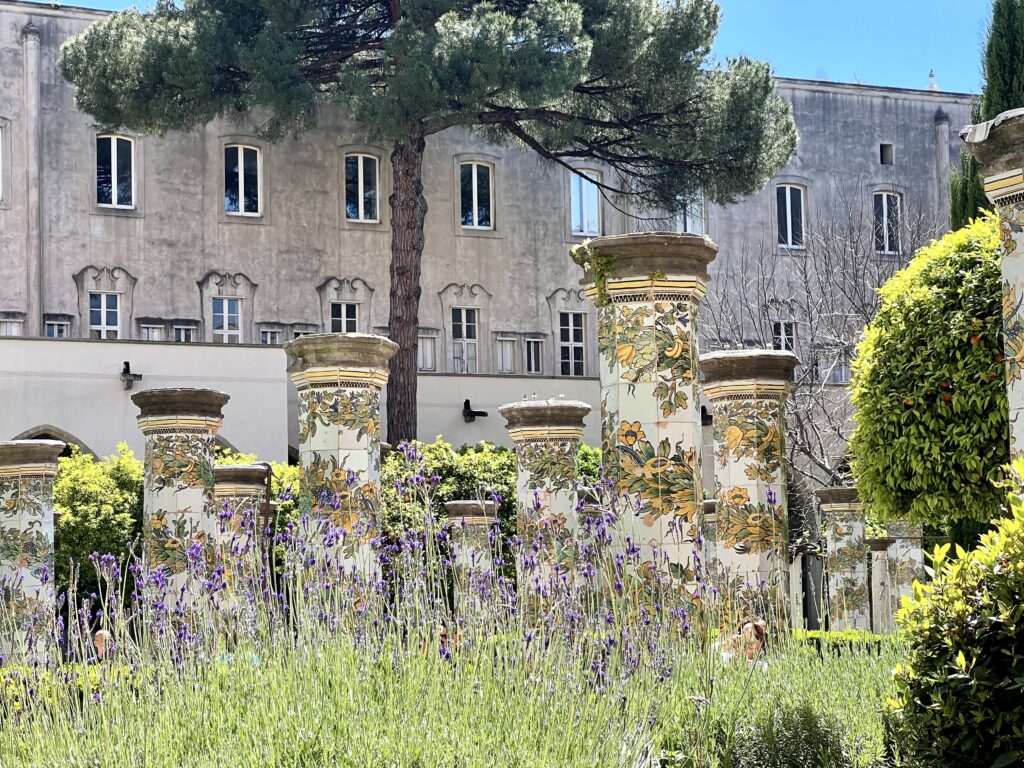
Tips For Visiting The Cloister of Santa Chiara
Address: Via Santa Chiara
Opening Hours: Monday through Saturday from 8:00 am to 12:45 pm & 2:30 pm to 8:00 pm. On Sunday, the hours are the same, except that the cloister opens one hour later at 9:00 am.
Tickets: Tickets are 6 euros. The Cloister of Santa Chiara is also included in the Naples Pass. You can also book a private walking tour of Naples that includes the cloister.
Dress Code: As the cloister is part of a religious site, it’s advisable to dress modestly out of respect. Try to wear appropriate clothing that covers your shoulders and knees.
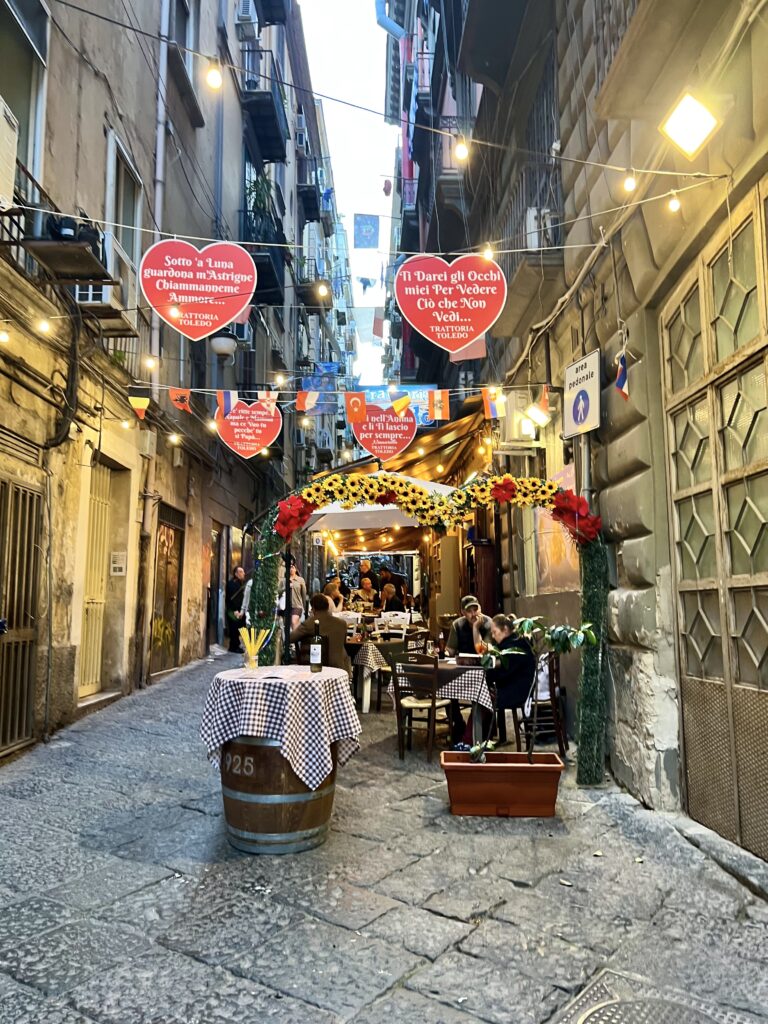
What To Do Near The Cloister
There are many other attractions near the cloister that you can combine in a visit to this area.
The Gesu Nuovo Church is a Baroque wonder just around the corner. Piazza Bellini and Piazza Dante are nearby, as is the Spanish Quarter.
And of course you can walk through the UNESCO-listed Spaccanapoli, the main drag in the historic center. It’s lined with narrow, winding streets, traditional buildings, and charming shops, which all create an atmosphere that reflects the authentic character of Naples.
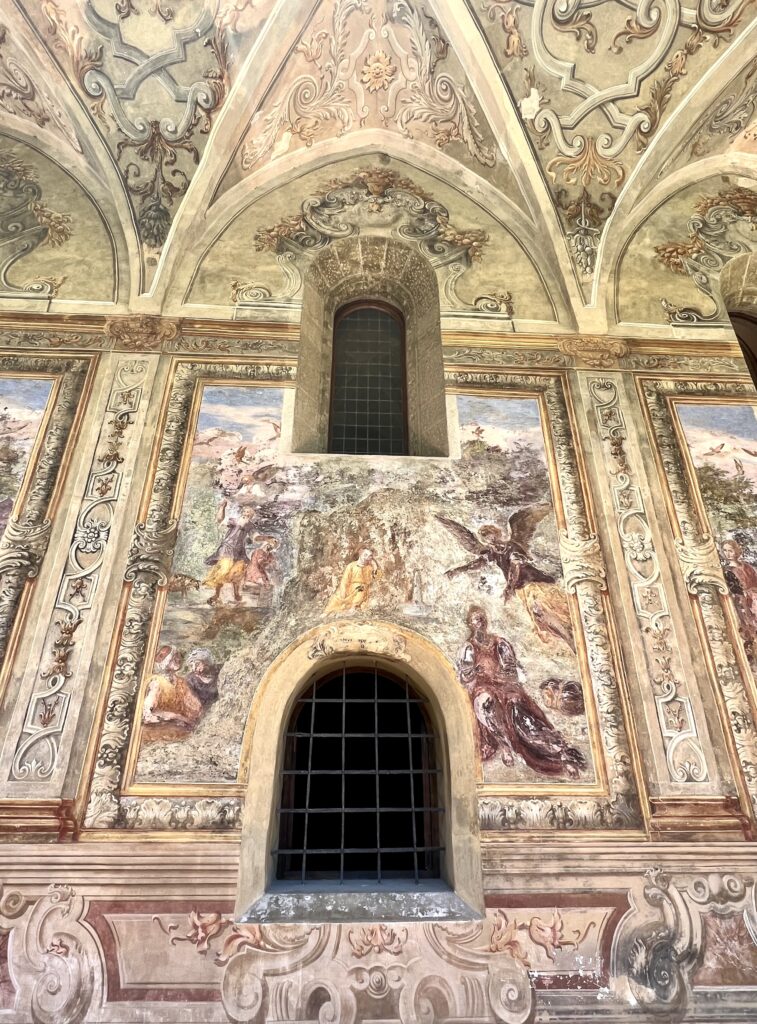
I hope you’ve enjoyed my guide to Naples’ magnificent Chiostro di Santa Chiara. You may enjoy these other Italy travel guides and resources:
- 3 day itinerary for Rome
- 5 day itinerary for Rome
- 1 day itinerary for Vatican City
- 3 day itinerary for Florence
- 2 day itinerary for Venice
- 1 day itinerary for Milan
- 1 day itinerary for Siena
- One week in Umbria
- 10 days in Italy itinerary
- 10 day itinerary for Tuscany
- 12 ways to spend 1 week in Italy
- 2 weeks in Sicily itinerary
If you’d like to visit the Cloister of Santa Chiara, pin it for later.

